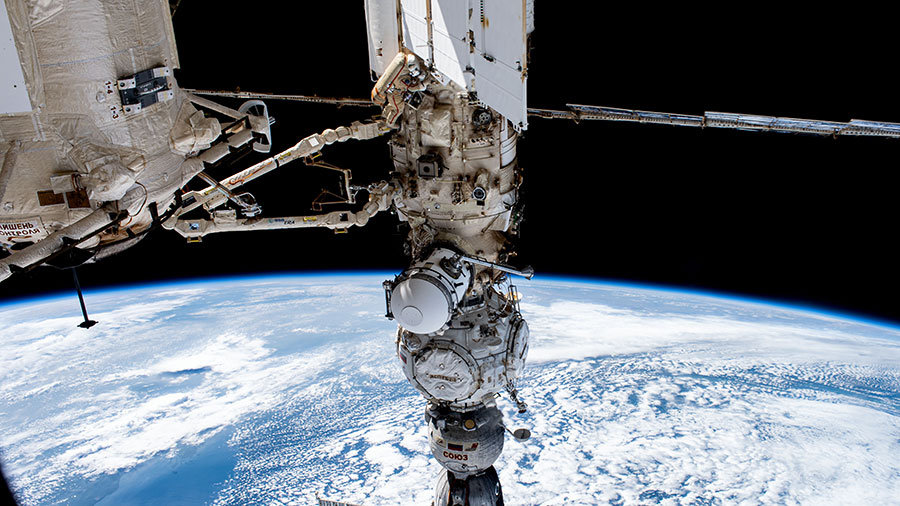Crew Studies Life Science to Improve Health on Earth and in Space

Life science to benefit humans on Earth and in space was the top research priority aboard the International Space Station on Monday. The Expedition 69 crew also worked on housekeeping tasks and cargo craft duties to start the workweek.
Research in microgravity reveals new phenomena that would be impossible to discover or observe in Earth’s gravity environment. The unique insights help scientists and doctors promote innovations and develop advanced therapies benefitting humans living on and off the Earth.
Two astronauts partnered together on Monday investigating how to produce stem cells in space using the Life Science Glovebox inside the Kibo laboratory module. Flight Engineers Frank Rubio of NASA and Sultan Alneyadi of UAE (United Arab Emirates) worked in the glovebox servicing stem cell samples that give rise to blood and immune cells with the potential to improve blood disease and cancer therapies on Earth. The StemCellEX-H Pathfinder biotechnology study may expand commercial and research opportunities in space as well as patient remedies on Earth.
NASA Flight Engineer Stephen Bowen wore a specialized vest and headband that monitored his cardiac activity and blood pressure while pedaling on an exercise cycle. The Bio-Monitor wearable sensors are being tested for their ability record astronaut health data without impeding normal activities. Bowen wore the biomedical gear as he exercised for the Cardiobreath cardiovascular and respiratory experiment that seeks to improve crew health.
NASA astronaut Woody Hoburg spent his day mostly on maintenance work with some time set aside for a space manufacturing study. He worked throughout the day unpacking hardware stowed in the Quest airlock so he could prepare it for the installation of a new overhead stowage platform. After lunchtime, Hoburg swapped graphene aerogel samples in the Microgravity Science Glovebox to learn how to manufacture a superior, more uniform structure in weightlessness. The SUBSA-μgGA physics study seeks to benefit Earth and space industries for better power storage, environmental protection, and chemical sensing.
Cosmonauts Sergey Prokopyev and Dmitri Petelin tested hardware that can remotely control an approaching or departing spacecraft from the Zvezda service module. The duo activated the telerobotically operated rendezvous unit, or TORU, and evaluated its operation with the docked ISS Progress 83 (83P) cargo craft. The 83P is due to end its six-month stay at the orbital lab on Sunday. It will be replaced on Aug. 24 when the ISS Progress 85 resupply ship docks to Zvezda’s rear port two days after its launch from the Baikonur Cosmodrome in Kazakhstan.
Roscosmos Flight Engineer Andrey Fedyaev had the day off on Monday spending time on personal activities and his daily two-hour workout. After lunch, Fedyaev spent about a half-hour checking life support gear in the Nauka science module.
Learn more about station activities by following the space station blog, @space_station and @ISS_Research on Twitter, as well as the ISS Facebook and ISS Instagram accounts.
Get weekly video highlights at: https://roundupreads.jsc.nasa.gov/videoupdate/
Get the latest from NASA delivered every week. Subscribe here: www.nasa.gov/subscribe
Powered by WPeMatico
Mark Garcia



